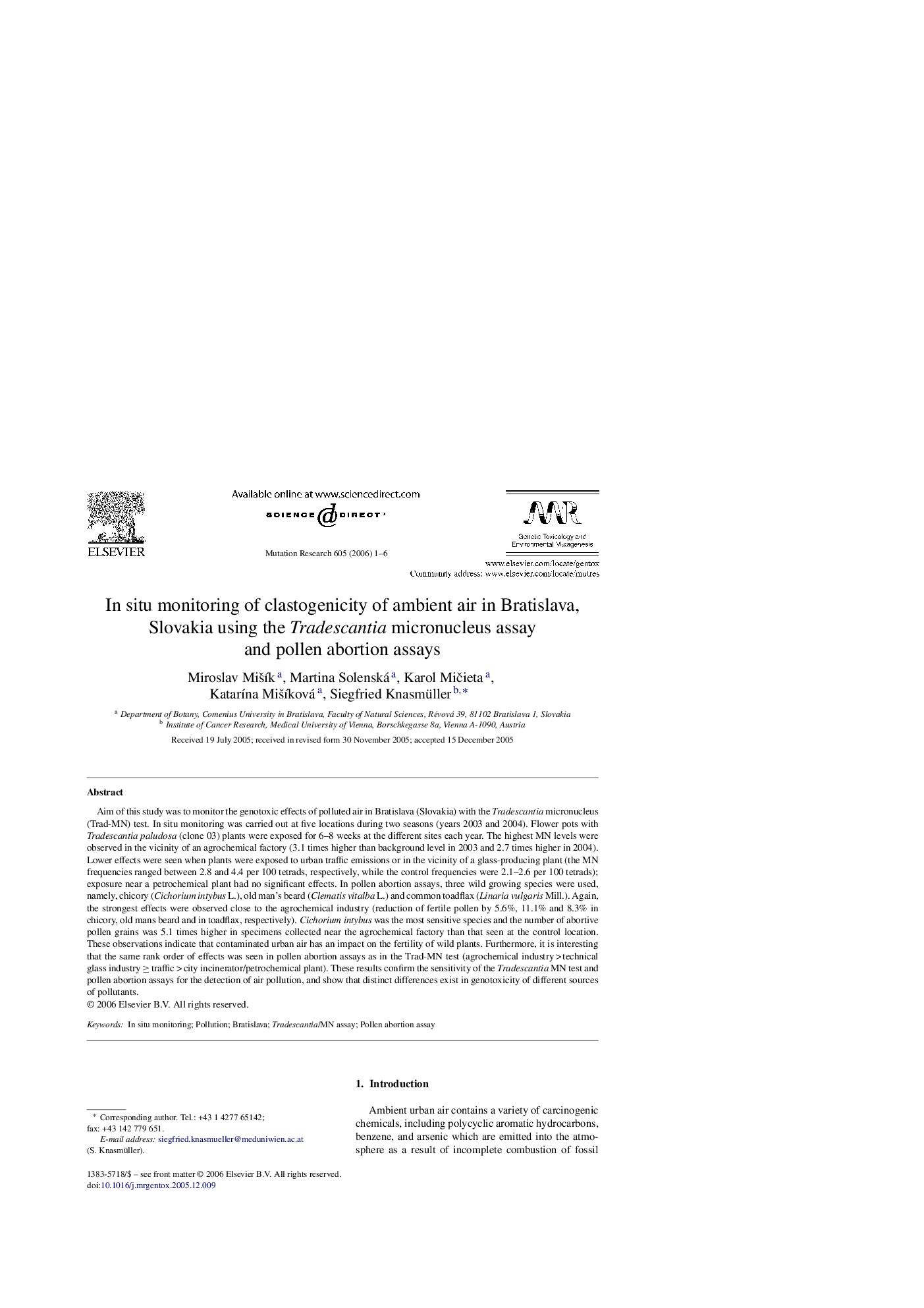| Article ID | Journal | Published Year | Pages | File Type |
|---|---|---|---|---|
| 2149366 | Mutation Research/Genetic Toxicology and Environmental Mutagenesis | 2006 | 6 Pages |
Abstract
Aim of this study was to monitor the genotoxic effects of polluted air in Bratislava (Slovakia) with the Tradescantia micronucleus (Trad-MN) test. In situ monitoring was carried out at five locations during two seasons (years 2003 and 2004). Flower pots with Tradescantia paludosa (clone 03) plants were exposed for 6-8 weeks at the different sites each year. The highest MN levels were observed in the vicinity of an agrochemical factory (3.1 times higher than background level in 2003 and 2.7 times higher in 2004). Lower effects were seen when plants were exposed to urban traffic emissions or in the vicinity of a glass-producing plant (the MN frequencies ranged between 2.8 and 4.4 per 100 tetrads, respectively, while the control frequencies were 2.1-2.6 per 100 tetrads); exposure near a petrochemical plant had no significant effects. In pollen abortion assays, three wild growing species were used, namely, chicory (Cichorium intybus L.), old man's beard (Clematis vitalba L.) and common toadflax (Linaria vulgaris Mill.). Again, the strongest effects were observed close to the agrochemical industry (reduction of fertile pollen by 5.6%, 11.1% and 8.3% in chicory, old mans beard and in toadflax, respectively). Cichorium intybus was the most sensitive species and the number of abortive pollen grains was 5.1 times higher in specimens collected near the agrochemical factory than that seen at the control location. These observations indicate that contaminated urban air has an impact on the fertility of wild plants. Furthermore, it is interesting that the same rank order of effects was seen in pollen abortion assays as in the Trad-MN test (agrochemical industry > technical glass industry â¥Â traffic > city incinerator/petrochemical plant). These results confirm the sensitivity of the Tradescantia MN test and pollen abortion assays for the detection of air pollution, and show that distinct differences exist in genotoxicity of different sources of pollutants.
Related Topics
Life Sciences
Biochemistry, Genetics and Molecular Biology
Cancer Research
Authors
Miroslav MiÅ¡Ãk, Martina Solenská, Karol MiÄieta, KatarÃna MiÅ¡Ãková, Siegfried Knasmüller,
